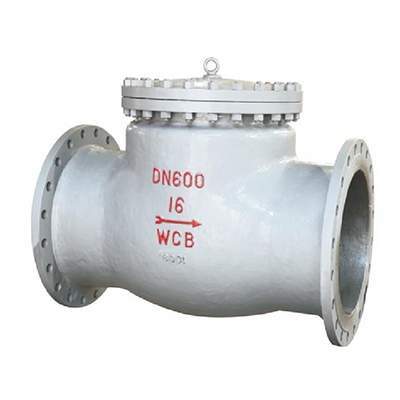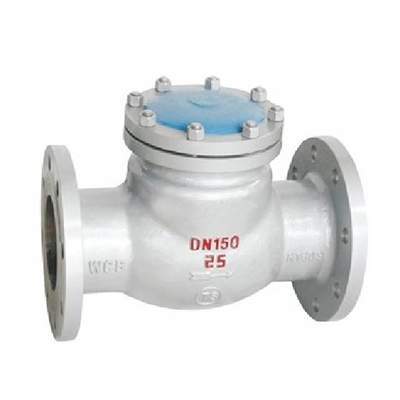Welcome to My Blog!
Before we dive into the content, if you’re interested in our products or have any questions, please feel free to visit our Contact Us page on the website. Our team is ready to assist you with inquiries, orders, or any support you may need.
Now, let’s get started on our journey together. I hope you find the content here insightful, engaging, and valuable.
Introduction

In fire protection systems, ensuring that water flows in one direction and preventing backflow is critical for maintaining the system’s efficiency and safety. A check valve for fire protection plays a key role in ensuring that water only flows towards the fire suppression system and not back into the main supply. This simple but essential mechanism prevents contamination, ensures system pressure is maintained, and guarantees the fire protection system performs as expected during an emergency.
Choosing the right check valve for fire protection is a significant decision, as it directly impacts the reliability and safety of the entire system. In this post, we will discuss the types of check valves, key material considerations, how to install and maintain them, and common issues you may face.
What is a Check Valve and Why Is It Important for Fire Protection?
A check valve for fire protection is a device designed to allow water to flow in one direction while preventing backflow. Backflow can lead to contamination, reduce system pressure, or even cause a system failure during a fire emergency. Without a properly functioning check valve, the entire fire protection system could be compromised, leading to catastrophic consequences when it is most needed.
Why it’s important:
- Prevents contamination: By stopping backflow, check valves ensure that harmful substances cannot enter the water supply.
- Maintains system pressure: A proper check valve keeps water flowing under the required pressure, ensuring a reliable water supply when needed.
- Ensures system performance: Without a check valve, the fire suppression system could malfunction, risking the safety of occupants and property.
Types of Check Valves Used in Fire Protection Systems
When selecting a check valve for fire protection, you have several options, depending on the system’s needs and the type of installation. Some common types include:
- Swing Check Valve: The most commonly used check valve in fire protection, where a hinged disc swings to allow water flow in one direction and closes to prevent reverse flow. Swing check valves are typically used in larger fire protection systems.
- Ball Check Valve: This valve uses a ball to seal the flow path. When water flows in the correct direction, the ball is lifted. In reverse flow, the ball seals the path. Ball check valves are ideal for high-pressure fire protection systems.
- Spring Check Valve: This valve is spring-loaded and closes automatically when backflow occurs, providing quick closure. Spring check valves are often used in smaller systems or where immediate closure is needed.
- Lift Check Valve: Similar to swing check valves but designed for vertical installations, lift check valves are typically found in pump discharge lines or in systems where water flows vertically.
Each type of valve has its advantages, and the best choice will depend on your fire protection system’s specific requirements, including system size, pressure, and installation orientation.
Choosing the Right Material for Check Valves in Fire Protection
The material you choose for a check valve for fire protection is crucial for the valve’s performance and longevity. In fire protection systems, check valves are exposed to high pressure, temperature fluctuations, and sometimes corrosive water, so material selection is vital to avoid failure.
Common materials:
- Brass: Known for its corrosion resistance, brass is ideal for lower-pressure systems and residential fire protection.
- Stainless Steel: The best material for high-pressure systems or environments prone to corrosion. Stainless steel offers durability and resistance to high temperatures, making it ideal for industrial-scale fire protection systems.
- Cast Iron: A cost-effective material, cast iron is often used in larger commercial or industrial systems.
- Bronze: A good balance of strength and corrosion resistance, bronze is commonly used for fire protection in commercial buildings.
Choosing the right material will depend on your system’s size, environment, and pressure requirements. For most fire protection systems, stainless steel check valves are the preferred option due to their durability and corrosion resistance.
The Role of Check Valves in Preventing Backflow
Backflow prevention is one of the primary roles of a check valve for fire protection. Backflow can cause contamination of the clean water supply, disrupt system pressure, and reduce the effectiveness of the fire suppression system. By automatically closing when backflow is detected, check valves ensure that water only flows in the desired direction, keeping the system functioning as it should.
How they work:
- Automatic closure: The valve shuts when reverse flow is detected, stopping any backflow into the system.
- Prevents contamination: With the valve sealed, no harmful substances can contaminate the clean water, ensuring that the fire protection system is safe to use during an emergency.
- Maintains pressure: By preventing reverse flow, the check valve helps maintain consistent water pressure, which is crucial for the fire suppression system to operate effectively.
Pressure Considerations When Choosing a Check Valve for Fire Protection
The pressure rating of your check valve for fire protection is essential. Fire protection systems vary in pressure based on the size of the building, the type of system, and the water supply. Using a valve that cannot handle the required pressure could lead to failures or inefficiencies during a fire emergency.
- High-pressure systems: In industrial fire suppression systems, higher pressure valves are needed to ensure that water is delivered effectively. Spring check valves and ball check valves are ideal for these applications.
- Low-pressure systems: Residential or smaller systems typically operate at lower pressures. Swing check valves are often sufficient for these systems.
Selecting the correct pressure rating ensures that the check valve for fire protection performs well under operational conditions without compromising system efficiency.
Installation Tips for Check Valves in Fire Protection Systems
Proper installation of a check valve for fire protection is critical to ensure its effectiveness and reliability. Here are some tips to ensure correct installation:
- Flow direction: Always ensure that the check valve is installed in the correct direction. Most valves have an arrow indicating the flow direction.
- Proper sealing: Ensure that all connections are tightly sealed to avoid leaks, which could affect system performance.
- Accessible placement: Install the valve in an easily accessible location to facilitate inspections, maintenance, and potential replacements.
- Correct positioning: Certain types of valves, like ball check valves for fire protection, may not function properly if installed in a horizontal position. Follow the manufacturer’s guidelines for installation.
Maintaining Check Valves in Fire Protection Systems
Regular maintenance of your check valve for fire protection is essential to ensure long-term reliability. Here are some steps to keep your valve in good working condition:
- Inspect regularly: Look for any signs of damage, rust, or leaks. If you notice anything unusual, address it immediately.
- Clean the valve: Remove any debris or sediment that may accumulate over time. This is especially important in areas with hard water.
- Lubricate components: For valves with moving parts, such as spring check valves for fire protection, lubricate them periodically to prevent wear and tear.
- Replace when needed: If the valve is damaged, leaking, or not functioning properly, replace it promptly to prevent system failure.
Common Problems with Check Valves for Fire Protection and How to Solve Them

While check valves for fire protection are reliable, they can still encounter issues. Some common problems include:
- Leaks: If the valve is leaking, it could be due to worn-out seals or improper installation. Inspect the seals and replace them if necessary.
- Backflow: If backflow occurs despite the check valve, check for debris inside the valve or improper orientation.
- Sticking valves: Sediment buildup can cause valves to stick. Cleaning the valve regularly can help prevent this issue.
Addressing these problems early ensures that your fire protection system remains reliable and functional.
Conclusion
Choosing the right check valve for fire protection is vital to the safety and efficiency of your fire suppression system. The valve’s material, pressure rating, installation, and regular maintenance all play a role in ensuring the system functions correctly when needed. By understanding how check valves for fire protection work and selecting the appropriate one for your system, you can ensure long-term reliability and compliance with safety standards.
FAQ
What is the role of a check valve in a fire protection system?
A check valve allows water to flow in one direction only and prevents backflow, ensuring the fire protection system remains uncontaminated and operates correctly.
How often should I inspect or replace check valves in my fire protection system?
Check valves should be inspected at least once a year. If any damage or malfunction is noticed, the valve should be replaced immediately.
What material is best for a check valve in a fire protection system?
For most fire protection systems, stainless steel check valves are the best option due to their durability, resistance to corrosion, and ability to withstand high pressure.
